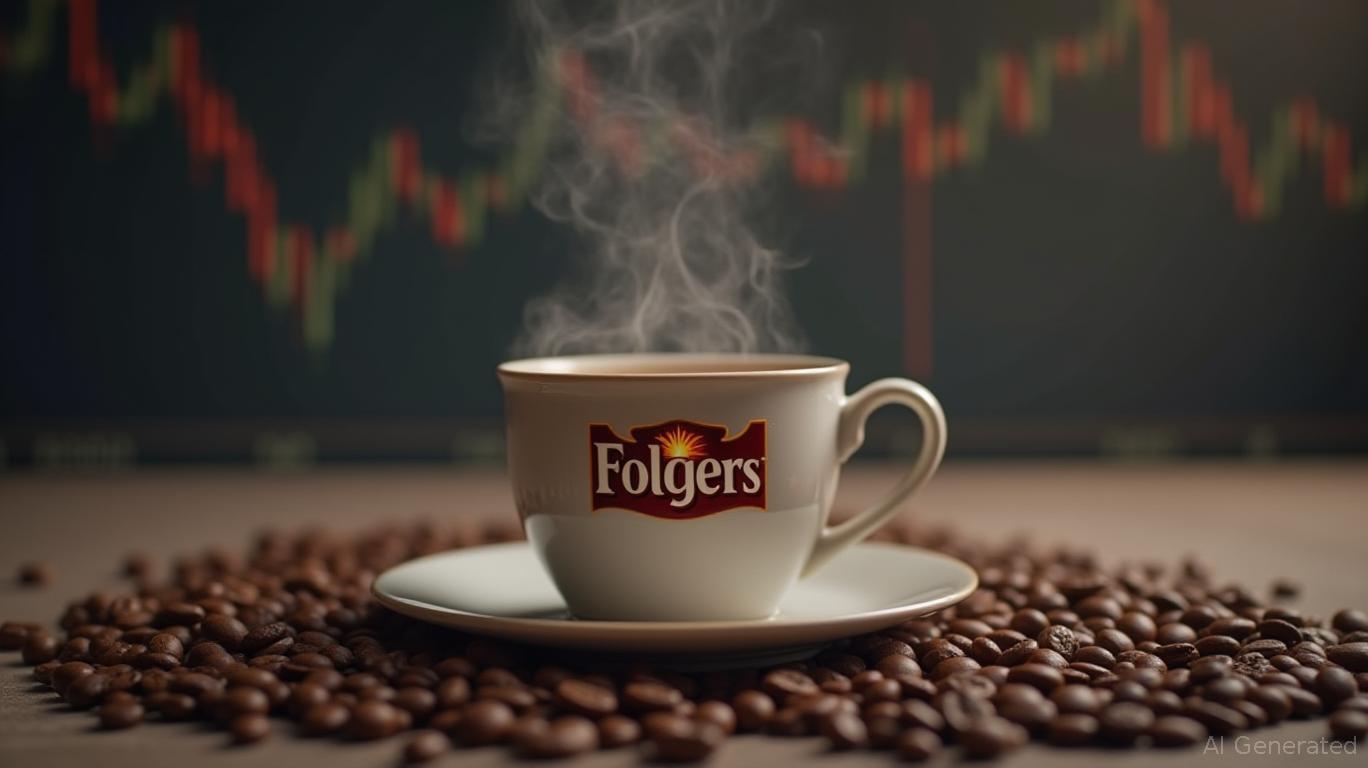JM Smucker's Coffee Pricing Strategy: Navigating Inflation and Consumer Resilience
The global coffee industry is grappling with unprecedented inflationary pressures, driven by rising green coffee costs, labor shortages, and geopolitical uncertainties. For JM Smucker (SJM), the leading U.S. coffee producer, these challenges have spurred repeated price hikes—a strategy that underscores broader industry dynamics and tests consumer willingness to pay more. This article examines how Smucker's pricing adjustments reflect systemic cost pressures, evaluates its competitive positioning, and weighs the risks for investors in consumer goods equities.

The Inflationary Crucible: Why Coffee Costs Are Skyrocketing
Coffee commodity prices have surged to record highs, with Arabica futures hitting $4.00/lb in early 2025—a 100% increase from late 2023—due to supply disruptions from Brazil's droughts and Vietnam's hurricanes. Meanwhile, input costs for producers are climbing: Guatemalan coffee farmers face a 10% minimum wage hike, rising fertilizer prices, and disease management costs. These pressures are compounded by U.S. tariff threats, which could impose 26–46% levies on imports from key suppliers like Vietnam.
Smucker's Pricing Play: Balancing Margin Protection and Demand Risk
To offset these costs, JM Smucker has implemented two price increases in 15 months—most recently in August 2024—with plans for further hikes. This strategy has boosted top-line growth: its U.S. coffee division reported an 11% sales jump in Q4 FY2025, driven by Folgers and Café Bustelo pricing gains. However, profit margins have suffered, falling 300 basis points to 28.6% as cost inflation outpaced price adjustments.
The critical question is whether consumers will absorb these increases. Analyst Alexia Howard of Bernstein warns that “historical price elasticity assumptions may no longer hold” given the frequency of hikes. Early signals are mixed: Café Bustelo gained market share through targeted promotions, while Folgers volumes declined, suggesting brand-specific vulnerabilities. Smucker's outlook for FY2026 assumes volume/mix declines due to demand sensitivity, tempering its 2–4% net sales growth forecast.
Competitive Positioning: Strengths and Vulnerabilities
Smucker's portfolio offers both resilience and risk. Its premium brands like Uncrustables (projected to hit $1B in sales by FY2026) provide a growth engine, insulated from direct coffee cost pressures. However, its core coffee business faces stiff competition: private-label coffee brands, which now account for 30% of U.S. sales, are aggressively undercutting prices. Meanwhile, rivals like Keurig Dr Pepper (KDP) and Starbucks (SBUX) are also raising prices, reflecting an industry-wide cost pass-through.
Risks on the Horizon: Beyond Coffee Costs
Investors must weigh additional risks beyond inflation. Smucker's sweet snacks division—home to Hostess—faces headwinds from health-conscious trends and potential regulatory scrutiny (e.g., reduced SNAP funding). Meanwhile, the looming threat of GLP-1 drug generics could suppress snacking demand, which accounts for 40% of U.S. coffee consumption.
Investment Implications: A Cautious Stance
For equity investors, JM Smucker presents a high-reward, high-risk opportunity. On the positive side:
- Margin Stability: If commodity prices stabilize or demand proves resilient, Smucker's pricing could restore margins.
- Balance Sheet Strength: Its $1.5B cash reserves provide flexibility for strategic moves.
On the downside:
- Volume Volatility: A consumer backlash to pricing could hurt both sales and brand equity.
- Sector-Wide Pressures: The entire staples sector faces valuation drags due to inflation and interest rate sensitivity.
Recommendation: Consider a tactical position in SMJ for investors with a 12–18 month horizon, but pair it with broader staples sector exposure (e.g., Vanguard Consumer Staples ETF) to diversify risk. Avoid aggressive bets until clearer signals emerge on demand elasticity and input cost trends.
Conclusion
JM Smucker's pricing strategy is a microcosm of the coffee industry's struggle to navigate inflation—a balancing act between margin preservation and demand retention. While its premium brands offer growth, the company's fate hinges on consumers' ability to absorb higher costs and the broader health of the snacks segment. For investors, SMJ is a “wait-and-see” play: monitor margin recovery and volume trends closely, but temper expectations given the sector's macroeconomic headwinds.

Comments
No comments yet